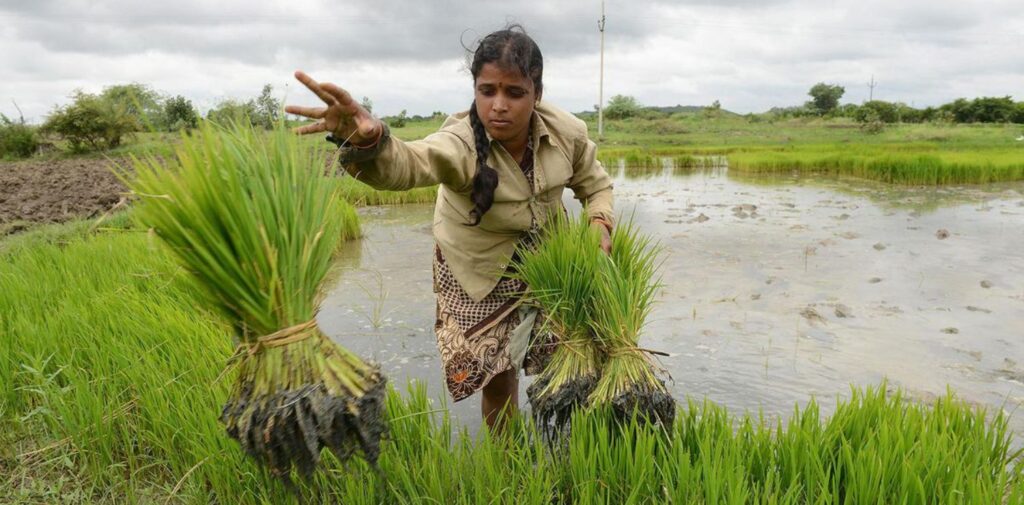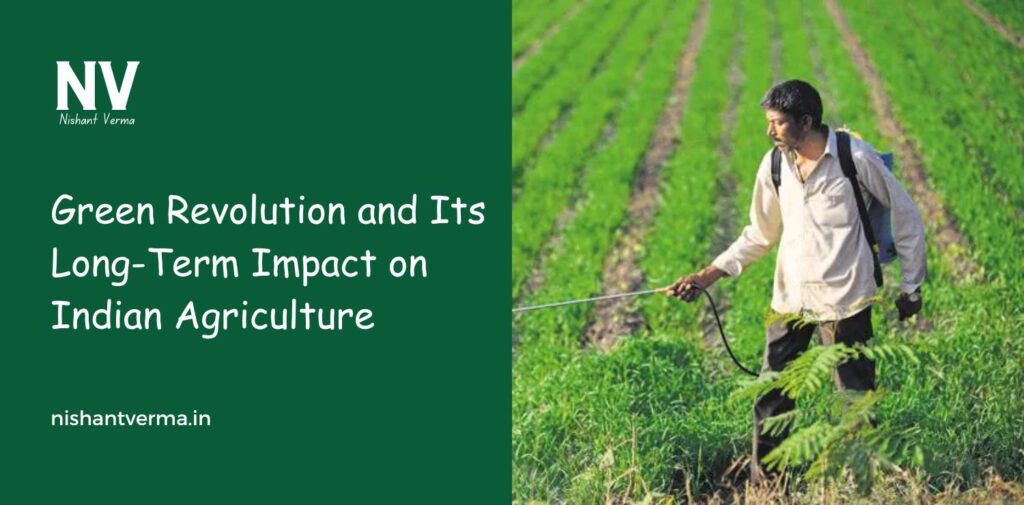The Green Revolution was a huge turning point in India’s agricultural history. It changed how food was produced, how farmers worked, and how people lived in rural India. Before the Green Revolution, India faced a lot of problems with farming. The country had to import food, and many people suffered from hunger. But everything changed in the 1960s when new methods and technologies were introduced to help farmers grow more food. These changes are still felt today.
Let’s dive into what the Green Revolution was and how it has impacted India’s agriculture in both good and bad ways.

What Was the Green Revolution?
The Green Revolution refers to a series of changes in farming techniques that began in the 1960s. These changes included the use of new types of seeds, better irrigation methods, and modern farming equipment. The goal was to make farming more productive, so that India could produce enough food for its growing population. The changes came from research done by scientists and agricultural experts, many of whom worked with international organizations like the Food and Agriculture Organization (FAO).
Why Did India Need the Green Revolution?
Before the Green Revolution, India was struggling with food shortages. The country had a large population, but its farmers were still using old methods of farming. They relied mostly on traditional crops and did not have enough tools or knowledge to improve production. As a result, India had to import food from other countries, which was very expensive.
In the 1960s, India was facing a serious food crisis. The country had just become independent in 1947, and it was still trying to find its feet. The government realized that if it didn’t find a solution to the food problem, millions of people could go hungry. So, the government decided to focus on improving agriculture. This led to the Green Revolution.
Key Changes Introduced by the Green Revolution
- High-Yielding Varieties (HYVs) of Seeds: One of the most important parts of the Green Revolution was the introduction of new seeds. These were specially developed to grow faster and produce more food. For example, new types of wheat and rice were introduced, which could give more crops per plant. Farmers started using these seeds to improve their yields.
- Chemical Fertilizers and Pesticides: Another change was the increased use of fertilizers and pesticides. Fertilizers helped crops grow stronger and bigger, while pesticides protected the crops from harmful insects. Though these chemicals helped increase food production, they also caused environmental problems over time.
- Irrigation: The Green Revolution also focused on improving irrigation systems. With better irrigation, farmers could grow crops even when there wasn’t enough rain. This meant that farming became more reliable, and farmers didn’t have to depend only on the weather.
- Mechanization of Farming: The Green Revolution introduced new machines like tractors, harvesters, and plows. These machines made farming faster and more efficient. Instead of doing everything by hand, farmers could use machines to work large areas of land more quickly.

Positive Impacts of the Green Revolution
The Green Revolution brought many benefits to India. Here are some of the most important ones:
- Increased Food Production: The biggest achievement of the Green Revolution was the rise in food production. Thanks to the new seeds, fertilizers, and irrigation systems, India was able to grow more food than ever before. The country went from being a food importer to a food producer. This was a huge relief for many people, as it helped reduce hunger and poverty.
- Self-Sufficiency in Food: Before the Green Revolution, India had to depend on food imports, especially wheat and rice, from other countries. With better farming techniques, India became self-sufficient in food production. This was an important achievement for a newly independent country, as it allowed India to focus on other areas of growth.
- Improvement in Farmers’ Income: Farmers were able to earn more money because they were growing more crops. The increased production meant that they could sell more at the market. This helped improve the standard of living for many farmers and their families.
- Economic Growth: The Green Revolution played a key role in boosting India’s economy. With better food production, more people were employed in agriculture, and the rural economy grew. This helped many villages to develop and improve their living conditions.
Negative Impacts of the Green Revolution
While the Green Revolution had many positive effects, it also brought some problems. These issues are still a concern in India today.
- Environmental Damage: The use of chemical fertilizers and pesticides had a negative impact on the environment. Over time, these chemicals polluted the soil, water, and air. The excessive use of water for irrigation also led to problems like water scarcity and the drying up of wells. This caused long-term damage to the environment, making it harder to sustain agriculture in the future.
- Dependence on Expensive Inputs: The new seeds, fertilizers, and machinery were expensive. Many small farmers could not afford them. As a result, they had to borrow money, often leading to debt. This created a divide between rich and poor farmers, with wealthier farmers benefiting more from the Green Revolution than poorer ones.
- Loss of Traditional Farming Methods: Traditional farming methods, which were more eco-friendly and sustainable, began to disappear. The focus shifted to high-yielding crops that required a lot of water and chemicals. This loss of diversity in farming practices made agriculture more vulnerable to pests, diseases, and changing weather patterns.
- Unbalanced Growth: The Green Revolution was not equally beneficial for all regions of India. Some states, like Punjab, Haryana, and Uttar Pradesh, benefited the most because they had better access to water and technology. Other states, especially in the dry and hilly regions, did not see the same benefits. This led to uneven development across the country.

The Green Revolution’s Legacy Today
The Green Revolution has left a lasting impact on Indian agriculture. While it helped India become self-sufficient in food, it also created some challenges. Today, India’s farmers still face issues like water scarcity, soil degradation, and pollution from chemicals. There is a growing need to find more sustainable ways of farming that protect the environment and help all farmers, not just the wealthiest ones.
In recent years, there has been a shift toward organic farming and environmentally friendly practices. These new methods aim to reduce the use of harmful chemicals and encourage more sustainable farming practices. The government is also promoting techniques like drip irrigation, which saves water, and crop rotation, which helps keep the soil healthy.
Conclusion
The Green Revolution was a turning point in India’s agricultural history. It helped the country grow more food, become self-sufficient, and improve the lives of many farmers. However, it also brought new challenges, such as environmental damage and a growing gap between rich and poor farmers. As India moves forward, it is important to find a balance between modern farming techniques and sustainable practices to ensure that agriculture continues to thrive for generations to come.
The Green Revolution is a reminder that progress can have both good and bad consequences. It teaches us the importance of thinking carefully about the long-term effects of changes in farming and working towards a future where everyone can benefit from the fruits of the land.




